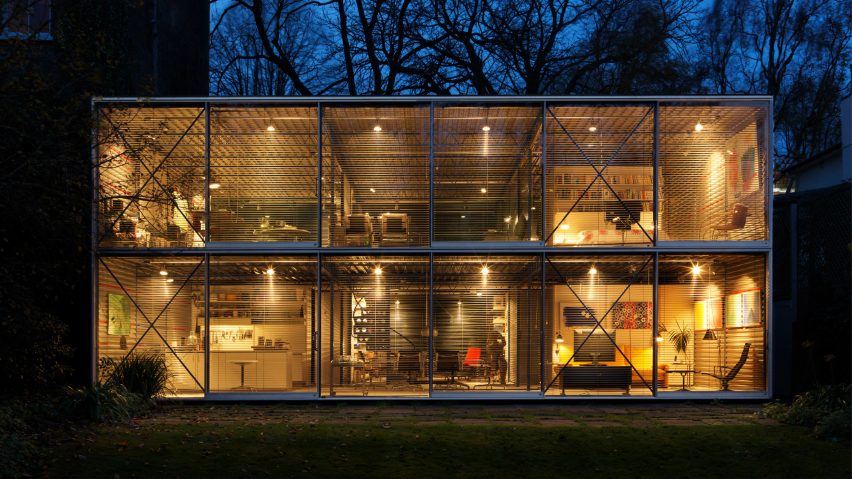
Ten key projects by high-tech pioneer Michael Hopkins
Following the news that high-tech pioneer and RIBA Royal Gold Medalist Michael Hopkins has died, we take a look at the key projects that defined his 50-year career.
One of the most influential British architects of the past century, Michael Hopkins was a key figure leading the development of the high-tech style in the 1970s, 80s and 90s.
Alongside his wife Patty Hopkins he lead Hopkins Architects, and the couple were jointly awarded the RIBA Royal Gold Medal in 1994.
Here we take a look at some of the studio's key projects from its high-tech beginnings to more historically routed buildings and Olympic venues:
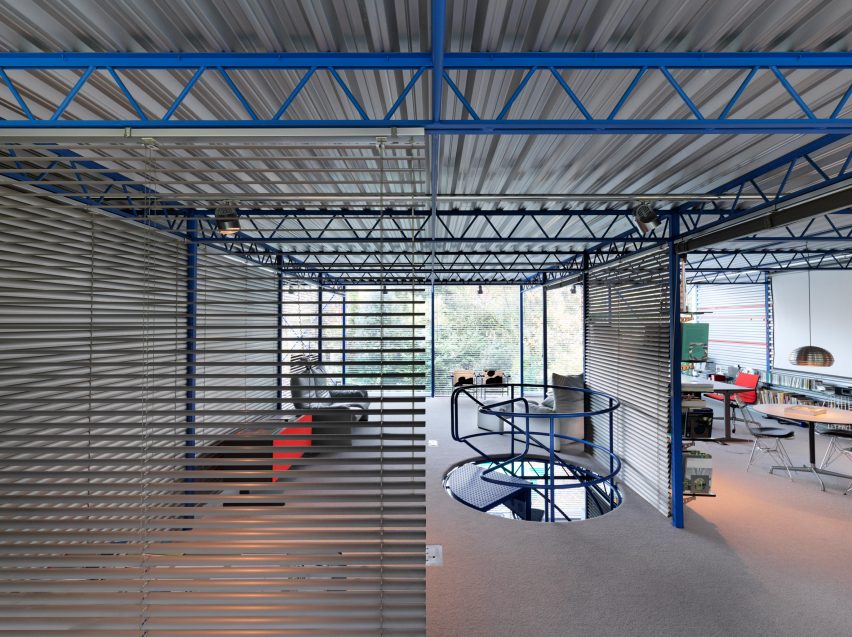
Hopkins House, London, UK (1976)
Designed by Michael and Patty Hopkins as their own home, Hopkins House (above and top) was completed shortly after the couple established their studio, and became the calling card for the duo's ethos.
Built alongside Victorian mansions and Regency villas in the north London suburb of Hampstead, the two-storey house was made from lightweight steel and glass and is accessed across a drawbridge.
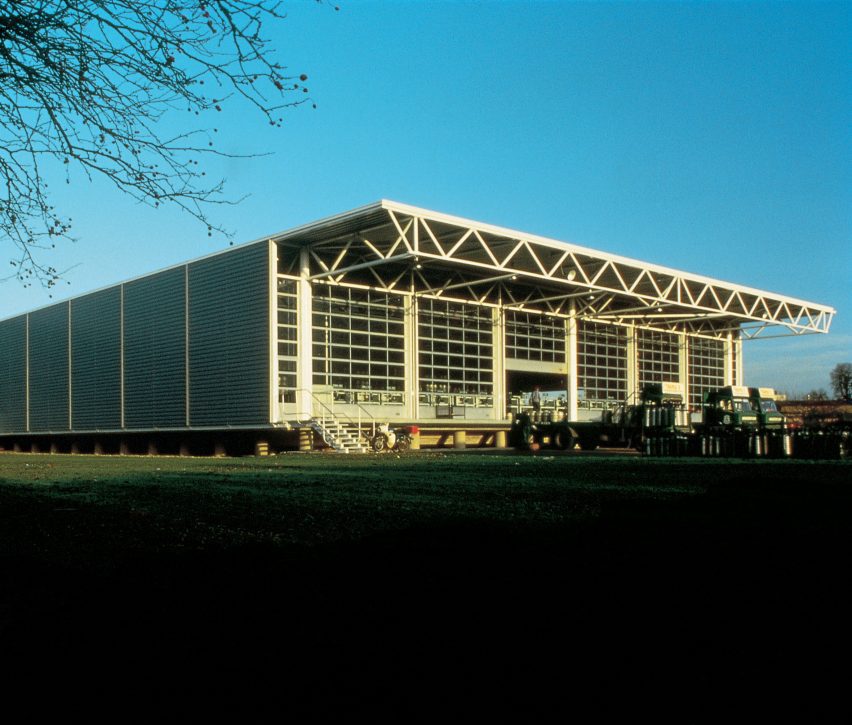
Greene King warehouse, Bury St Edmunds, UK (1980)
Like many of the early high-tech buildings, the storage and distribution space for the Greene King Brewery in Bury St Edmunds is an industrial shed.
Raised above the flood plain on a series of concrete columns, the 2,600-square-metre shed was topped with a steel-truss-roof that extends above the loading bay.
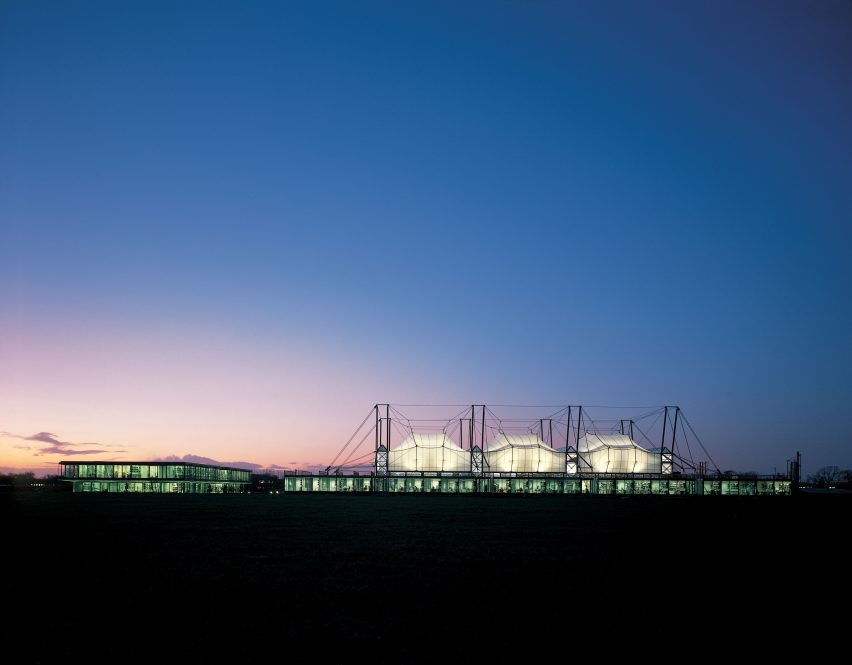
Schlumberger Research Centre, Cambridge, UK (1985)
Another early high-tech building designed by Hopkins Architects, the research centre for Schlumberger is defined by three tent-like structures hung from a network of cables supported by a series of masts.
The tented structures, which are made from Teflon-coated glass fibre, enclose a central space designed to contain a drilling-rig test station along with a social space called the winter garden. These structures were surrounded by two independently structured wings that contain offices and laboratories.
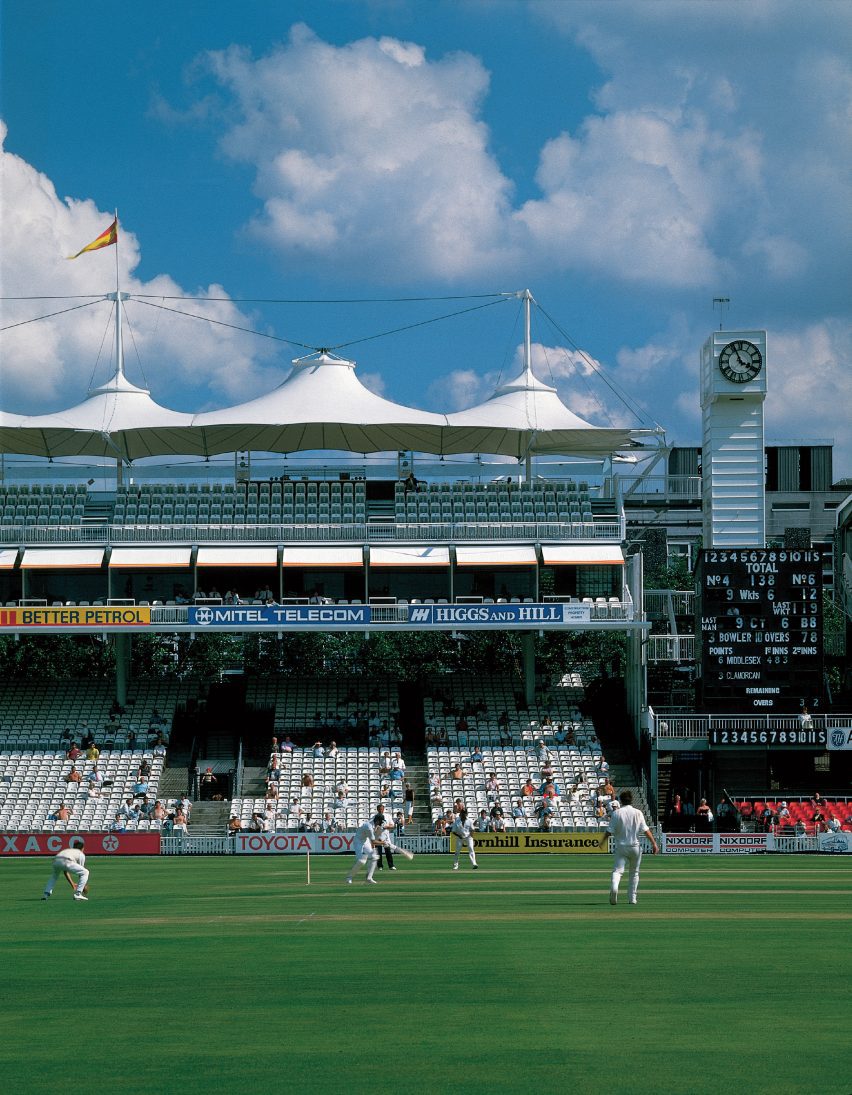
Mound Stand, London, UK (1987)
One of the first projects by the studio that was built in a historic context, Hopkins Architects' stand was built above the existing 19th-century, brick Mound Stand at Lord's cricket ground.
The structure was supported on six columns that extend up to become masts from which a PVC-coated, polyester fabric roof was hung. The structure was designed to recall "the romantic image of a tent by a village cricket green".

Glyndebourne Opera House (1994)
Set alongside a red brick neo-Elizabethan mansion, the Glyndebourne Opera House was designed to be a highly functional, 1,200-seat venue that was sympathetic to its historic location.
The oval-shaped building was sunk 10 metres into the ground to disguise its scale and was built from hand-made Hampshire red brick to recall the neighbouring building. However, it was topped with a prominent, high-tech fly tower.
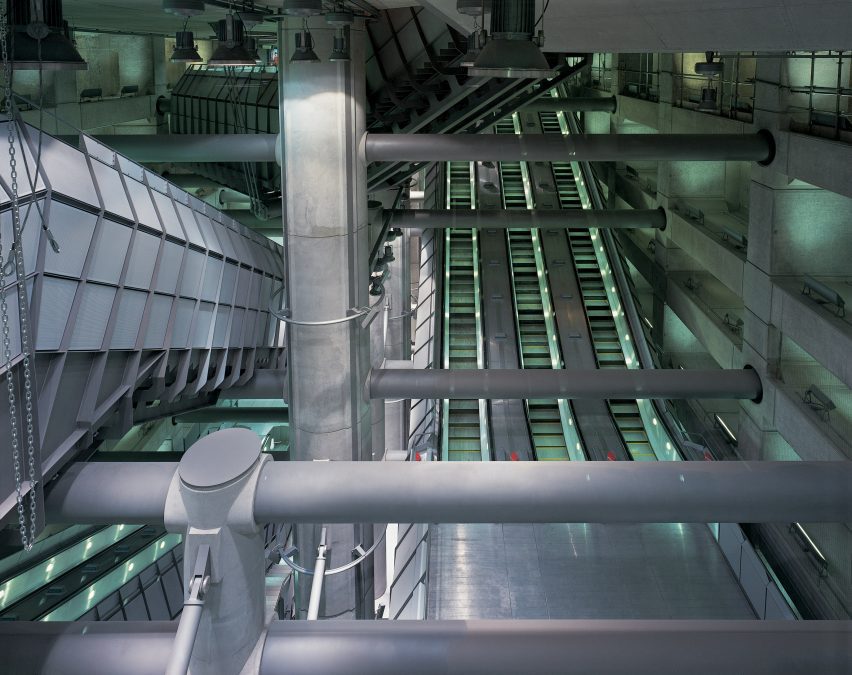
Westminster Underground Station, London, UK (1999)
Built as part of the Jubilee line extension of the London Underground, the station is defined by its visible superstructure of colossal steel tubes and concrete piers.
The structure also supports the Portcullis House office block that was built directly above it.
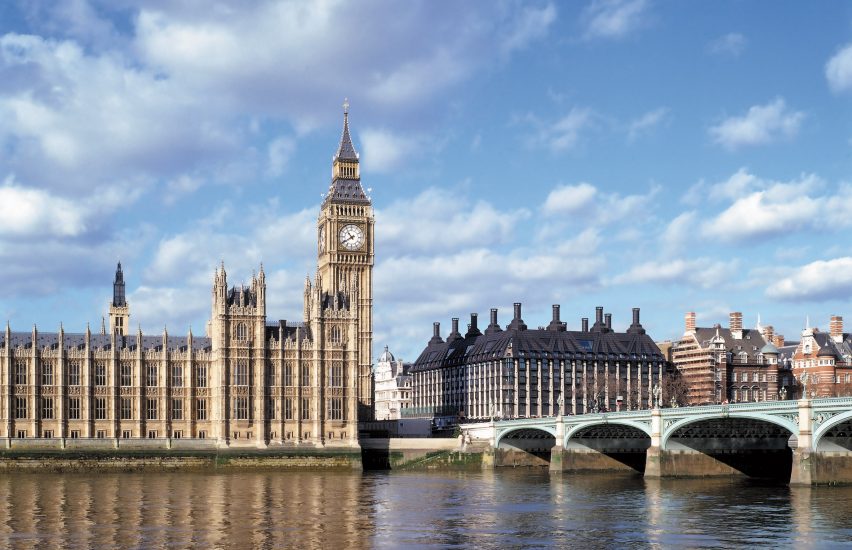
Portcullis House, London, UK (1999)
Built in a historical location alongside the Palace of Westminster, the six-storey Portcullis House is an example of Hopkins Architects' high-tech classicism.
The block contains 200 offices for Members of Parliament and is wrapped in sandstone pillars separated by steel canopies and window boxes and topped with 14 ventilation chimneys. It was shortlisted for the Stirling Prize in 2001.
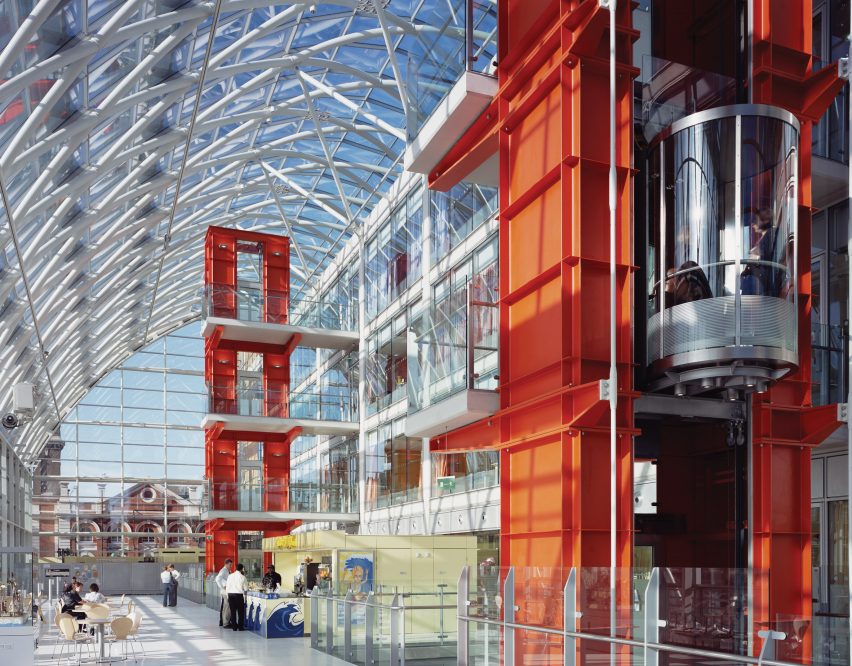
Evelina Children's Hospital, London, UK (2005)
The second of four of the studio's buildings to be shortlisted for the Stirling Prize, the Evelina Children's Hospital was designed to be "a state-of-the-art facility for children that didn't look or feel like a hospital".
Set almost directly opposite the Palace of Westminster in central London, the building consists of two long blocks that flank a skylight central atrium, which contains waiting areas and a cafe.
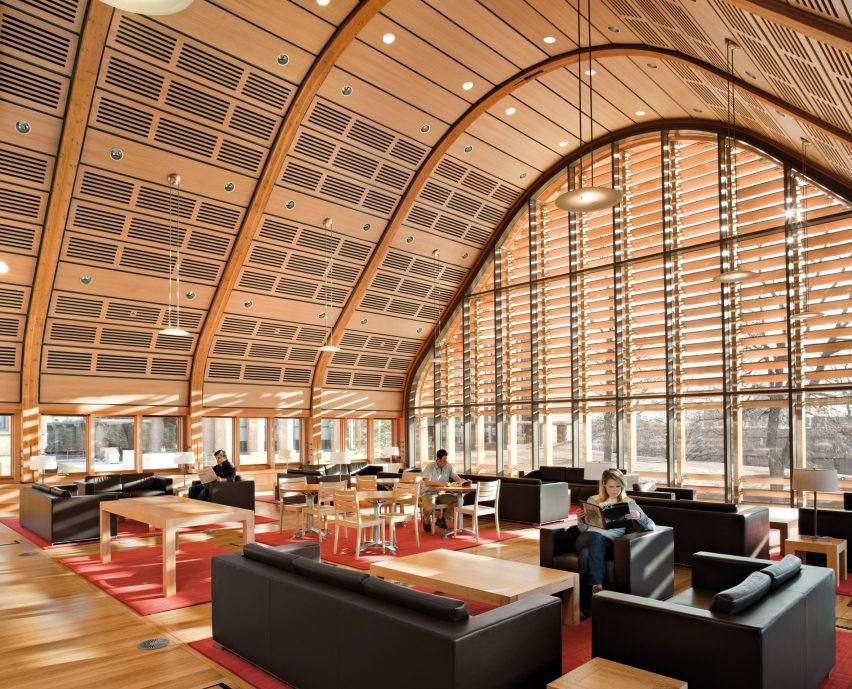
Kroon Hall, Yale, USA (2009)
Designed to demonstrate the values of the School of Forestry and Environmental Studies, Kroon Hall was created to be the most sustainable building at Yale university and when it completed, the studio believes it was the "greenest university building in the USA".
Built using local materials including Briar Hill stone and Yale forest timber, the building incorporated rooftop photovoltaics, solar hot water heaters, rainwater harvesting and ground source heat pumps. It was awarded an LEED-Platinum sustainability rating.
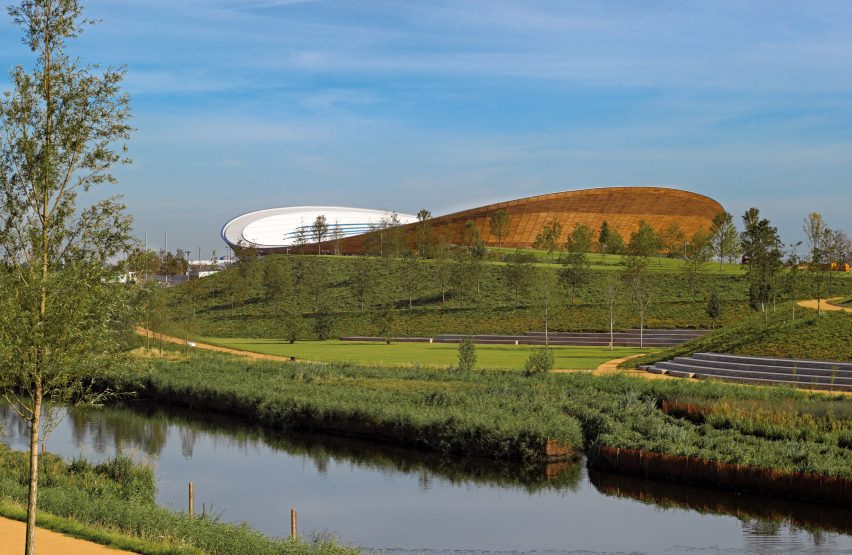
One of the signature buildings built to host the 2012 Olympic Games, the 6,000-seat venue velodrome is defined by its hyperbolic paraboloid-shaped roof.
The building's form, and its cable net roof, were designed to reduce the overall volume of the building with "the compact, ergonomic form – affectionately known as the Pringle – expressing the building's function".